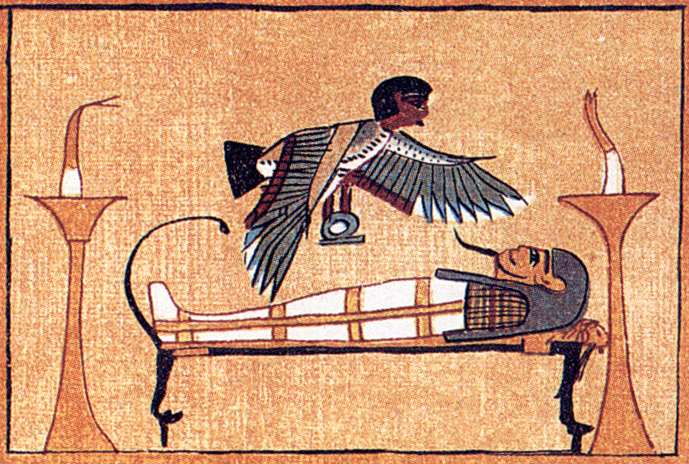Brushed by God’s Presence
Article By Kurush Dordi
posted by Kurush Dordi, August 1, 2018
 For millennia, specific locations around the world have been regarded with fascination and sacredness. Despite all the materialistic opulence and grandeur of some of the most recent human architectural achievements, there remains something awe inspiring about many ancient structures that have stood their ground for thousands of years. For many, even the most grandiose five-star properties of Dubai look pale when compared to the magnificence of the Angkor Wat Temple Complex in Cambodia for instance. Such ancient monuments are characterized by various symbolic elements that lend themselves to their sacred function; dedication to a particular deity, use of specific colours, use of specific building materials, architectural design, and perhaps above all, the importance associated to their chosen location itself.
For millennia, specific locations around the world have been regarded with fascination and sacredness. Despite all the materialistic opulence and grandeur of some of the most recent human architectural achievements, there remains something awe inspiring about many ancient structures that have stood their ground for thousands of years. For many, even the most grandiose five-star properties of Dubai look pale when compared to the magnificence of the Angkor Wat Temple Complex in Cambodia for instance. Such ancient monuments are characterized by various symbolic elements that lend themselves to their sacred function; dedication to a particular deity, use of specific colours, use of specific building materials, architectural design, and perhaps above all, the importance associated to their chosen location itself.
The Romanian scholar of religion, Mircea Eliade (1907–1986), coined the term “hierophany” to describe what he felt was the particular character of specific places “brushed by God’s presence.” Aboriginal peoples also believe that certain places become sacred due to the touch of the Creator; these locations were tended to through the practice of certain rites of purification, prayer, fasting and abstinence. While no particular rites were necessary in order to make a place sacred, excessive interference by human beings could cause adulteration.
A sacred location is often associated with a specific mountain or hill, some rocks, lakes, or meadows and can even encompass entire landscapes or ecosystems. They are believed to be animated and imbued by spirits, sometimes known as elementals and regarded as gods by many ancient traditions. Perhaps the Kabbalah alludes to this richness of life which modern man is blind to, when it suggests that the wise man who knows to read nature doesn’t need the wisdom of books. Could it be that the ancient traditions that we might today dismiss as pagan, perhaps understood the secrets of nature more deeply than we can imagine or empirically perceive today?
For the ancients, these sacred locations functioned as bridges between the physical and the metaphysical worlds, offering access to the realm of the divine, and offering the opportunity of transformation. It is for this reason perhaps, that such locations were often chosen for rites of passage such as tribal initiation, marriage and funerary rituals. Many were also chosen as pilgrimage destinations, considered centres for healing, both for the body, as well as the soul.
In the Enneads, the philosopher Plotinus explains the purpose of sacred locations: “Those ancient sages who saught to secure the presence of divine beings by the erection of shrines and statues, showed insight into the nature of the All; they perceived that, though the Soul is everywhere traceable, its presence will be secured all the more readily when an appropriate receptacle is elaborated, a place especially capable of receiving some portion or phase of it, something reproducing it, or representing it and serving like a mirror to catch an image of it.” (3)
The Celestial Mirror
Early civilisations recognized that the sun, the moon, planets and the stars each correlate with various astronomical cycles. Almost universally the most important moments of the solar cycle were considered to be the equinoxes (Latin: equal nights) and the solstices (Latin: sun standing still), which for many ancient civilisations marked the division of the year into the four seasons. Each was closely observed with periodic fluctuations in the Earth’s energies, resulting in the earliest proto-religious festivals celebrated by early man. Folklore and mythology richly document the importance of these moments. As man became sedentary, these four seasons also became associated with planting and harvesting.
In order to time these special moments, across the world through history, civilizations dedicated themselves to building a range of monuments at specific locations. Some of the most ancient and mathematically complex examples of these are the Megalithic constructions estimated to have been erected between 4000 and 1500 BCE. They range from single to multiple vertically erected boulders known as menhirs and dolmens which are sometimes part of enormous earthen mounds with rock-lined passages and hidden chambers, and of course mysterious rings, of which Stonehenge and Avebury are the most famous examples. Esoterically, it is thought that the construction of such sacred sites was seen as an imitation of the forces of creation.
There are an estimated nine hundred such rings in the British Isles alone and the research over the past thirty years which has combined Archaeology, Astronomy, along with Geophysical energy monitoring devices, has demonstrated that they had likely functioned as both astronomical observation devices and ceremonial centres. Professor Alexander Thom of Oxford University began meticulously surveying megalithic sites in 1934. Initially, his findings were not well received by the academia because it turned conventional archaeology on its head. It showed that the mathematical, astronomical and engineering ability of these ancient megalithic builders was far more advanced than had been thought, predating capabilities that would later emerge in Europe by more than a thousand years.
Many of these Megalithic structures seem to be situated at carefully chosen sites that show unique geothermal activity, or mark the presence of underground water, specific minerals, or magnetic/telluric currents. While these are all naturally occurring phenomena, it is thought that ancient builders knew to locate and harness their energy. Some suggest that such megaliths served the function of bridging between the Earth’s telluric currents and celestial stellar currents. Marking these important locations released these energies operating like acupuncture needles meant to release or channelize these forces for specific purposes.
Other examples of similar megalithic structures are Tatetsukilike in Okayama (Japan), the Beforo monument in the Central African Republic, the famous Moai statues of Easter Island and many more are found all through the Indian sub-continent as well.
Sacred Geometry, Location and Architecture
In Order lies Beauty. And in Beauty lies Order. This almost makes geometry, geography and architecture best friends. Virtually all ancient sacred architecture was built with considerations of geometry and geography, wherein natural proportions and ratios became the axis through which to mediate between the human and divine realms. Sacred architecture thus derived was meant to make the human realm harmonious with the divine.
Most esoteric traditions seem to have worked with geometry as a deep mystic language by which to understand and emulate the secrets of the universe. For example, the Sthapatya Veda, an ancient Indian treatise on architecture, advised that a temple and a city should ideally be a reflection of the cosmos. Interestingly, it is observed that Harappan cities had well-defined grids, and were constructed as per instructions from various Vedic manuals. (2) The square shape represented the heavens, in alignment to the four cardinal directions, as well as the two solstices and the equinoxes.
It is also noteworthy that at the centre of many ancient cities lay its most elevated part, which was also the most meaningful, and usually housed an important temple, or other place of inspiration such as a library or place of governance. The rest of the city was constructed around this sacred centre, which both physically and symbolically guarded what was deemed most essential at its heart.
Sacred Spaces in Nature
If all of nature is sacred, and all living beings are sacred, then how can a specific place or thing be designated as especially more sacred? Consider, for instance, the four cardinal directions: North, South, East and West. While each is equally important, the East has always had a specific sacred importance that emerges from the symbolic reference to the daily rising sun, mysteriously revitalizing the earth. Hence we find the sanctum sanctorum of many sacred structures facing the East.
Various cultures associated special importance to mountains, often considered the abode of the gods, symbolically capturing the elevation of the spirit.
Similarly water bodies have also often been associated with the sacred, as if reminiscent of the many myths that speak of the emergence of creation from a vast primordial ocean. The Roman philosopher Seneca declared, “Where a spring rises or water flows, there ought we to build altars and offer sacrifices.” This was often followed. In ancient Egyptian mythology the sun-god Atum (Ra) is said to have reposed on the primordial ocean (Nun). In Babylonian mythology the primordial gods all arose from the fusion of salt water (Tiamat) and sweet water (Apsu). The holy books of the Hindus explain the churning of the ocean as the source of all creation. Natural springs, rivers, lakes and wells continue to be perceived, therefore, as full of that creative potential, which translates in religious traditions as dwellings of supernatural beings. In other instances, fountains took on the meaning of eternal youth.
So what do all these examples mean for us? The consciousness of sacred places is by itself an indication of the aspiration of ancient man, to find special areas in which the link to the divine was more accessible. This demonstrates a drive to harmonize with the sacred. To this end, important monuments were erected at specific locations, as a means by which to express this yearning. Ancient man set off on pilgrimages to these locations, to heal himself, to attain inner harmony between his own material and spiritual dimensions. Perhaps we might revive such an aspiration, and develop the sensitivity to recognize and treasure the mysterious and meaningful secrets of the Earth’s natural geography.
Image Credits: By Weyf | Wikimedia Commons | CC 0 1.0
Related posts:
Image References
By garethwiscombe | Wikimedia Commons | CC BY 2.0
Permissions required for the publishing of this article have been obtained
Article References
1. Thom, Prof Alexander. Megalithic Sites in Britain. Clarendon Press. Oxford. (1967). 2. Volswahsen, A. Arquitectura Universal. Garriga. India, Barcelona. (1975). 3. Plotinus. Excerpts from Plotinus's The Enneads. Translated by Mackenna, Stephen & Page, B. S. (2009).




What do you think?